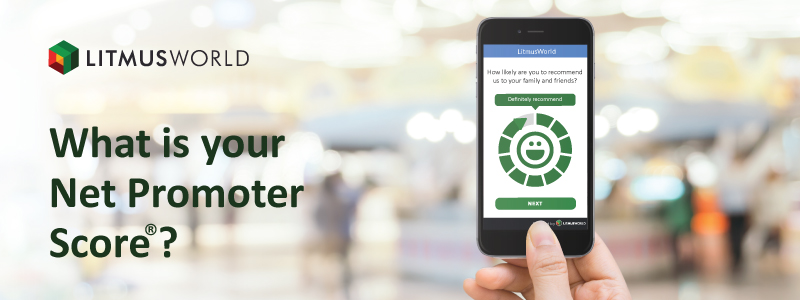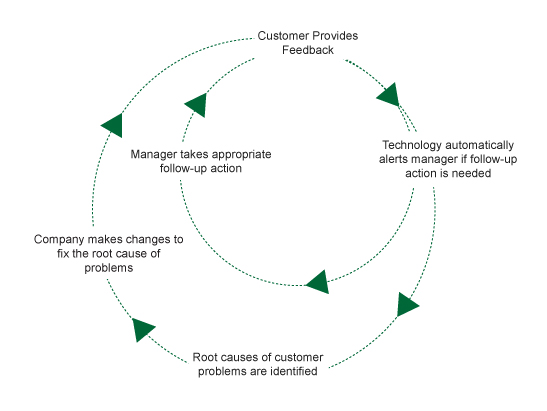NPS 101 – Understanding The Net Promoter Score
NPS® 101 – Understanding the Net Promoter Score®

Can customers be a part of your sales force?
Is it possible to “woo” them so much that they become advocates for your brand?
Yes, of course, it’s possible. But… what does it take to convert a customer to an advocate or a “promoter”?
Decoding Net Promoter Score®
Net Promoter Score or NPS® is a way to quantify the ultimate question “would you recommend us to a friend or a family member?” It is a system to classify a customer’s loyalty into promoters, passives and detractors. But a simple classification isn’t enough.
For a deeper understanding of Net Promoter Score (NPS)®, consider these 3 types of scores derived from NPS®:
- Touchpoint NPS®: This captures the customer’s experience immediately after an interaction to understand how a particular touchpoint like order placement, website, customer support, and so on, affects loyalty.
- Relationship NPS®: This involves periodic conversations with customers to understand their overall experience with the brand. This helps in measuring how loyalty gets affected over a period of time.
- Benchmarking NPS®: Analyse the experience of customers of a competitor brand to serve as a comparison platform. This aids in deciding what or where to prioritise.
Loyalty economics: The value of a promoter
You know a promoter is valuable to your business but the challenge is to quantify that value. Do you know what it’ll cost you – whether positively or negatively – to convert 5% or 10% of your customers into promoters?
An analysis of each group’s value can help you not only to understand the profitability of promoters, passives and detractors but also to understand how the business decisions you take will affect these groups and thereby affect the company’s performance.
The following check-points can be used to calculate the value of each group to determine behaviour which impacts the difference between revenue and cost:
- Retention: Promoters reduce acquisition costs and improve retention rates. Detractors, on the other hand, have shorter and less profitable relationships with brands. Use this to calculate the average lifetime of the 3 groups of customers.
- Price sensitivity: Promoters are less price sensitive when compared to detractors because they see the value of your product or service, more than the cost of that product or service.
- Cost efficiencies: Since the lifetime of a promoter is more, they are quick to upgrade to more expensive offerings of the brand, complain less, and bring in customers thereby reducing your overall customer acquisition cost.
- Word of mouth: Nothing speeds up a buying process than a positive endorsement from a friend or family member. Consequently, nothing derails the buying process quicker than a negative word of mouth. More than 80% of positive word of mouth is generated by promoters.
- Referral generation: While ‘Word-Of-Mouth’ is a spontaneous referral by a customer, referral generation requires a systematic approach to coax promoters and passives to advocate for the brand. You may have to expend time, energy, personnel – even money, to have a robust system to generate business through referrals.
Closing the feedback loop
 At any given point in time, a person has 4-5 customer experience surveys in their mailbox asking for feedback. Even if they answer your survey, how often does this person get an acknowledgement that you, the brand, have received their feedback and are working on it – or more importantly get back to them on the closure of an issue?
At any given point in time, a person has 4-5 customer experience surveys in their mailbox asking for feedback. Even if they answer your survey, how often does this person get an acknowledgement that you, the brand, have received their feedback and are working on it – or more importantly get back to them on the closure of an issue?
“Closing the loop” is crucial to Net Promoter Score (NPS)®. Why? Closing the feedback loop essentially means sharing the feedback received from a customer with the employee, person or team in charge of creating the experience for the customer. And it shouldn’t stop with just ensuring that the feedback reaches the right team. It extends to contacting the customer whose feedback warrants further probing to identify issues and remedy problems.
This kind of proactiveness not only will convert a customer into a promoter, but it also provides you with an opportunity to weed out potential breakdowns and have a robust system of response.
Why develop NPS®?
 Today’s customers are armed with social media, reviews, blogs, etc. to share their opinion on a brand and thus influence a person’s buying behaviour. Customer experience is relevant whether you’re a start-up or a globally known brand.
Today’s customers are armed with social media, reviews, blogs, etc. to share their opinion on a brand and thus influence a person’s buying behaviour. Customer experience is relevant whether you’re a start-up or a globally known brand.
How does Net Promoter Score (NPS)® help you track performance?
- Inspires action: In its simplest form, NPS® helps a company understand what it’s doing right and what it’s doing wrong. It motivates the organization from top to bottom – especially those in the front lines – to do better. It also provides an immediate feedback mechanism to decisions taken.
- Innovation: Having a hard line into what your customer wants and demands can often lead to you innovating ways in which to solve a problem. Bajaj Allianz Health Insurance uses NPS®, and an ongoing interaction with a customer to find a way to improve the experience across the customer journey.
- Achieving greatness: As the CEO of Rackspace implies, finding enthusiastic customers who can turn advocates for you and your brand is the true path to greatness. A happy customer is a direct reflection of your organisation.
Earning customer loyalty should be a top strategic priority. Only the most effective leaders understand that earning a customer and employee loyalty helps deliver great financial and strategic results.
If you’re interested in learning more about Net Promoter Score®, get in touch today.
References:
https://www.bain.com/insights/the-economics-of-loyalty/
https://www.bain.com/insights/introducing-the-net-promoter-system-loyalty-insights/


